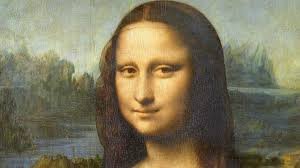For more than five centuries, the Mona Lisa smile has remained one of the most enigmatic and captivating expressions in the history of art. Painted by Leonardo da Vinci between 1503 and 1506, the Mona Lisa—housed in the Louvre Museum in Paris—has drawn millions of admirers. But it’s her smile, subtle and elusive, that continues to inspire debate among historians, scientists, and art lovers around the world.
The History Behind the Mona Lisa
The woman in the painting is widely believed to be Lisa Gherardini, the wife of a wealthy Florentine merchant. Leonardo da Vinci began working on her portrait in Florence during the Renaissance, and he never delivered it to the patron. Instead, he carried it with him for years, refining it until he died in 1519.
What makes the Mona Lisa smile so intriguing is not just its ambiguity but its timeless power to draw viewers in. Unlike the stiff portraits of her era, Lisa’s expression seems alive, shifting as you move your eyes or tilt your head.
The Science Behind the Smile
One of the key techniques that da Vinci used to achieve the effect of the Mona Lisa smile is called sfumato, an Italian word meaning “soft” or “smoky.” This painting method allowed him to blur the edges of her mouth and eyes, creating an illusion of movement and emotional ambiguity. Depending on the viewer’s perspective, her smile can seem joyful, coy, or even melancholic.
Modern neuroscience has also tried to decode the smile. Studies have shown that people perceive the Mona Lisa smile differently based on their emotional state, viewing angle, and focal point. Researchers from the University of Freiburg found that the smile appears to vanish when focused on directly and reappears in peripheral vision—a visual illusion intentionally crafted by Leonardo.
The Symbolism in Her Smile
Beyond technical mastery, the Mona Lisa smile carries deep symbolism. In Renaissance Italy, women were expected to present themselves modestly and discreetly. The subtlety of Lisa’s expression might reflect these societal norms, giving her just enough mystery to spark intrigue without breaching decorum.
Freudian analysts have theorized that the smile reveals da Vinci’s subconscious mind, perhaps tied to memories of his mother or unresolved desires. Others suggest the smile is a spiritual or philosophical gesture—an invitation to contemplate the mysteries of identity and emotion.
Modern Theories and Controversies
Despite centuries of study, speculation still surrounds the Mona Lisa’s smile. Some experts argue that her expression suggests sadness rather than serenity. AI facial recognition software has attempted to analyze her emotions, concluding that her face shows 83% happiness, 9% disgust, and 6% fear, adding yet another layer to the puzzle.
Other theories suggest that the subject may not be Lisa Gherardini at all, or that the painting could even be a feminized self-portrait of Leonardo da Vinci. These ideas remain controversial but highlight how the painting’s mystique fuels endless interpretations.
Cultural Legacy of the Mona Lisa Smile
The Mona Lisa smile has transcended the boundaries of fine art. It has appeared in films, books, advertising, and internet memes. It represents not just a person but a state of mind—a moment frozen between joy and sorrow, certainty and doubt.
Artists from Salvador Dalí to Marcel Duchamp have parodied or reinterpreted her expression, underscoring how her smile serves as a blank canvas for human projection. In pop culture, the phrase “Mona Lisa smile” has come to symbolize mystery, femininity, and emotional complexity.
Why the Fascination Continues
Even in an age of digital art and high-resolution imagery, the Mona Lisa smile remains a mystery. What makes it so powerful is not that we can’t explain it, but that we all explain it differently. The painting holds a mirror to the viewer, revealing as much about ourselves as it does about its subject.
Conclusion
The Mona Lisa smile is more than a facial expression—it’s a portal into the mind of one of history’s greatest artists and a testament to the enduring power of art to provoke thought, emotion, and debate. As long as the painting continues to hang in the Louvre, generations to come will ask the same question: What is she thinking?
Don’t Miss Out! Get the Latest News, Tips, and Updates from Us!


